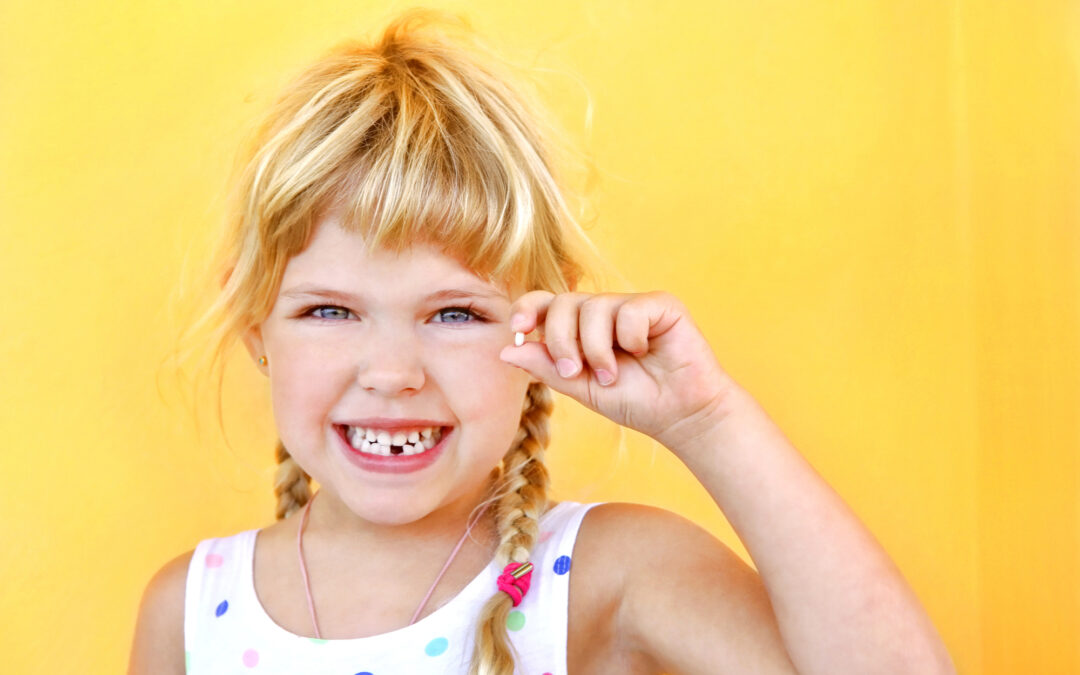Losing baby teeth is an exciting part of growing up. Who does not remember the first time you put a baby tooth under your pillow – with the anticipation of getting something special from the tooth fairy? Losing baby teeth is a normal part of growth and development.
The tradition of leaving a tooth under a pillow for the Tooth Fairy to collect is practiced in various countries, including the U.S. Virtually every child believes the Tooth Fairy myth.
What is the Tooth Fairy?
The Tooth Fairy is a fantasy figure of early childhood in Western and Western-influenced cultures. Linda S. Watts (2007) stated that when children loose any of their baby teeth, they should place it underneath their pillow, or on their bedside table, and the Tooth Fairy will visit while they sleep – replacing the lost tooth with a small payment.
One of the tales surrounding the Tooth Fairy myth is the Tooth Fairy’s house is made from the teeth she collects. The Tooth Fairy’s house is a huge, white castle with towers and a sparkling moat. The Tooth Fairy is very particular about the baby teeth she collects and uses for her castle. If the child’s tooth has a cavity or dark spot, she will throw the bad tooth into the mouth of a big cave, where it will be ground up into fairy dust.
If You Are Wondering How the Tooth Fairy Myth Can Be Helpful to Parents, Here Is How
Telling a child the Tooth Fairy will come to collect a cavity-free baby tooth in exchange for monetary rewards or other gifts often excites them. It may also provide comfort to a child experiencing fear or pain from losing a tooth. Apart from the gift, it could also help children strive to keep their baby teeth healthy for the Tooth Fairy’s cavity free house, by brushing twice daily and reducing consumption of sugars. These are some of the major factors that could lead to cavities.
Making the Tooth Fairy Come Quicker
If you notice your child is having “double teeth” (i.e. baby tooth is present and will not loosen, while the adult tooth is erupting and right behind the baby tooth), you may encourage your child to wiggle it themselves. This will aid in natural exfoliation. Parents can also aid children with wiggling out mobile baby teeth. An alternatively preferable approach would be to schedule your child with the dentist for further evaluation and appropriate management.
Facts About Losing Baby Teeth
- The normal loss of baby teeth is important because over-retained teeth can cause gum inflammation and sensitivity or affect the eruption pattern of permanent teeth. Over-retained baby teeth may also lead to crowding of teeth, or cause malocclusion.
- Be careful that an overtly loose baby tooth can get dislodged at an unexpected time, such as when a child is sleeping, and can get aspirated in the lungs.
- The loss of primary teeth and the eruption of permanent teeth usually occur naturally and without complications, although there are sometimes variations to normal eruption. Check with your dentist if you notice a variation with your child’s baby teeth.
- Sometimes the eruption of the adult teeth counterpart can cause swelling of the gum tissue. These swellings will appear as a bubble on the gums and can even take on a bluish hue.
- While some children are nervous to lose their baby teeth, it is important to teach them this is a natural part of growth and development. It is also important for parents to realize this is a normal part of their child’s development. If a parent is nervous or apprehensive about a loose baby tooth, it will often lead to the child having similar anxiety. Be mindful how you portray or show your dental fears around your child.
At Smile League Dental, if we need to make the Tooth Fairy come quicker by extracting their baby teeth, we effectively communicate with children in a manner they understand. After the process, we bag their baby teeth to take home so they can get their tooth fairy experience. We also offer them toys to help them feel better.
Our priority at Smile League Dental is making dental treatment a fun, memorable process for children. Our team is extra caring, yet efficient and knowledgeable in various dental procedures and processes and can help your child get rid of their dental ailments while providing quick relief. Call 815-782-6243 or schedule your appointment online today.
References
- Watts, Linda S. (2007). “Tooth Fairy (legendary).” Encyclopedia of American Folklore. New York: Facts on File. P. 386. ISBN 0-8160-5699-4


Recent Comments